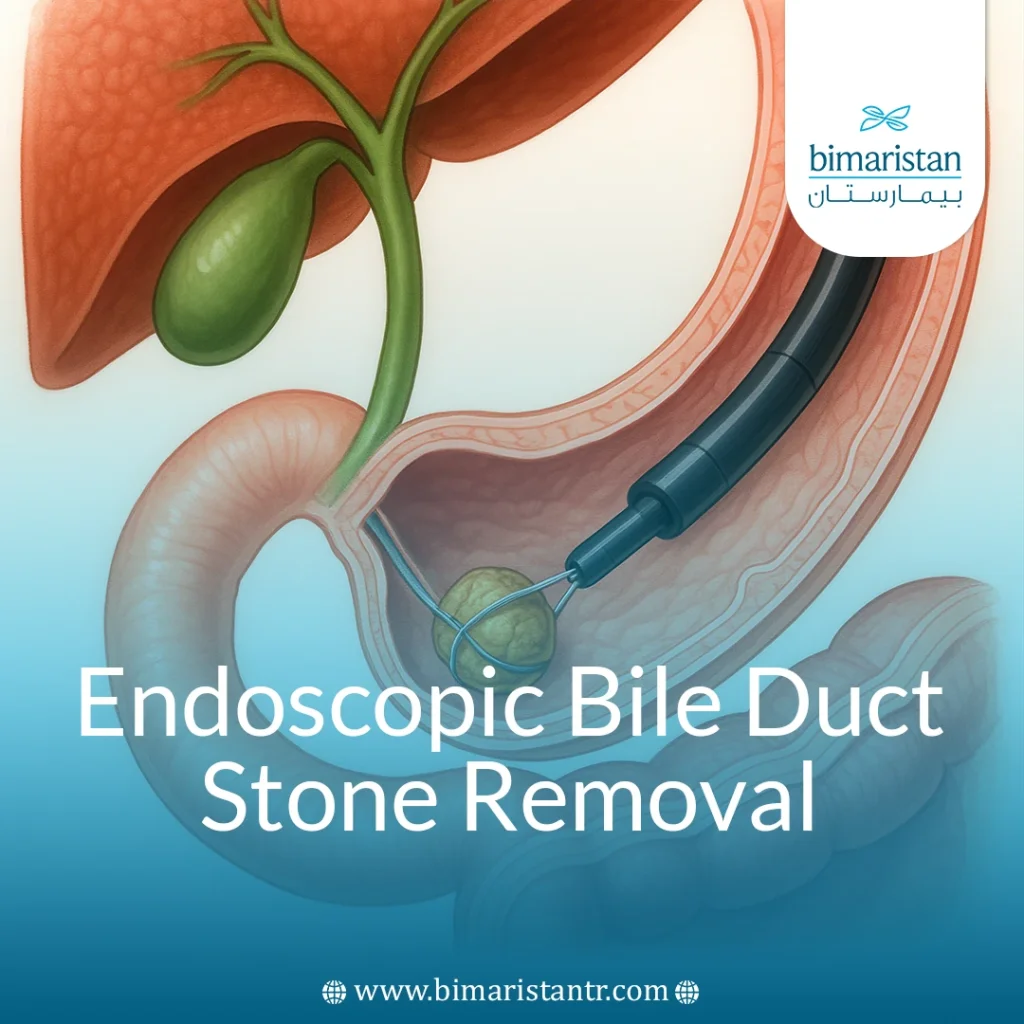Bile duct stones are a health issue that can lead to serious complications if not treated in time. Fortunately, this condition can now be treated without traditional surgery through endoscopic bile duct stone removal, an advanced technique known as endoscopic retrograde cholangiopancreatography (ERCP). This procedure is an effective and fast option, and may also include cholelithotripsy to facilitate minimally invasive removal of bile stones.
What are bile duct stones?
Bile duct stones are stones that form in or travel to the common bile duct, the duct that carries bile from the gallbladder to the intestines to aid in digestion. These stones are made up of concentrated substances in the bile that resemble small pebbles, and they form in different locations within the biliary system. The difference between gallstones and bile duct stones is that gallstones form within the gallbladder itself, while bile duct stones travel from the gallbladder to the common duct or form within the bile ducts themselves and may cause a blockage.

When is it recommended to remove bile duct stones?
Endoscopic bile duct stone removal is recommended when symptoms of duct obstruction appear, such as pain in the upper abdomen that sometimes extends to the shoulder, nausea and vomiting, yellowing of the skin and whites of the eyes, along with changes in urine color. Fever may indicate the presence of inflammation or infection requiring rapid intervention. If treatment is delayed, serious complications such as cholangitis, cholecystitis, or pancreatitis may result from obstruction of the common bile duct. The condition is diagnosed through blood tests, ultrasound, magnetic resonance cholangiopancreatography (MRCP), and endoscopic ultrasound.
How to perform endoscopic bile duct stone removal?
Stone removal is usually performed through endoscopic retrograde cholangiopancreatography (ERCP), where the doctor starts by inserting a flexible scope through the mouth, through the esophagus and stomach to the beginning of the small intestine where the bile duct opens, after locating the stones, the doctor makes small cuts in the muscle surrounding the opening of the duct to widen the passage, and then uses special tools to break and remove the stones from the bile duct.
The procedure usually takes 30 to 60 minutes and is usually performed under local anesthesia with a mild sedative, rather than full general anesthesia, allowing the patient to wake up quickly after the procedure.
Advantages of laparoscopic lithotripsy over traditional surgery
Laparoscopic retrograde cholangiopancreatography (LRCP) has several advantages over traditional surgery. First, the procedure does not require an incision in the abdomen, which significantly reduces post-operative pain, and recovery is faster as patients are able to return to their daily activities more quickly compared to open surgery. In addition, success rates for stone removal are higher due to modern techniques that enable precise visualization and sophisticated instruments. In some cases, patients can be discharged from the hospital on the same day as the procedure, reducing the length of stay and associated treatment costs.
Risks and possible complications
Although endoscopic retrograde cholangiopancreatography (ERCP) is considered a safe and effective procedure for removing bile duct stones, some complications may occur. Common short-term complications include bleeding during or after the procedure, infections of the bile duct or surrounding areas, and pancreatitis, which results from sensitization of the pancreas during stone removal.
In the long term, complications may arise after endoscopic bile duct stone removal, such as the recurrence of stone formation, where new stones can develop in the bile duct, necessitating ongoing monitoring and potential treatment. Additionally, the incision made to open the duct during the procedure can result in scar tissue formation, known as biliary strictures, which may obstruct bile flow and sometimes require further therapeutic intervention.
It is crucial for the patient to stay alert to post-procedure symptoms like severe pain, fever, or bleeding and to contact the doctor immediately if any of these signs occur. This ensures timely medical response and helps prevent serious complications after endoscopic bile duct stone removal.
After endoscopic bile duct stone removal
After endoscopic bile duct stone removal via ERCP, patients should follow post-procedure care instructions to ensure smooth recovery and avoid complications. Mild abdominal discomfort or bloating may occur but typically resolves within a few days. It’s recommended to avoid heavy or fatty meals shortly after the procedure to ease the digestive system.
Patients must watch for warning signs such as fever, persistent pain, nausea, or vomiting, which could signal infection or other issues requiring urgent medical evaluation. While no major dietary change is usually necessary, a fiber-rich, low-fat diet may help prevent recurrence.
Since endoscopic bile duct stone removal is minimally invasive and more comfortable than open surgery, it effectively restores bile flow with quicker recovery. In some cases, stones may return, so regular monitoring and follow-ups with a hepatologist or gastroenterologist are advised.
Sources:
- Beg, S., Singh, R., Hussain, M. J., Sinha, S. K., & Khanna, S. (2007). Choledocholithiasis: diagnosis and management. Annals of Gastroenterology, 20(3), 175-182.
- NHS. (n.d.). Gallstones – Treatment.

